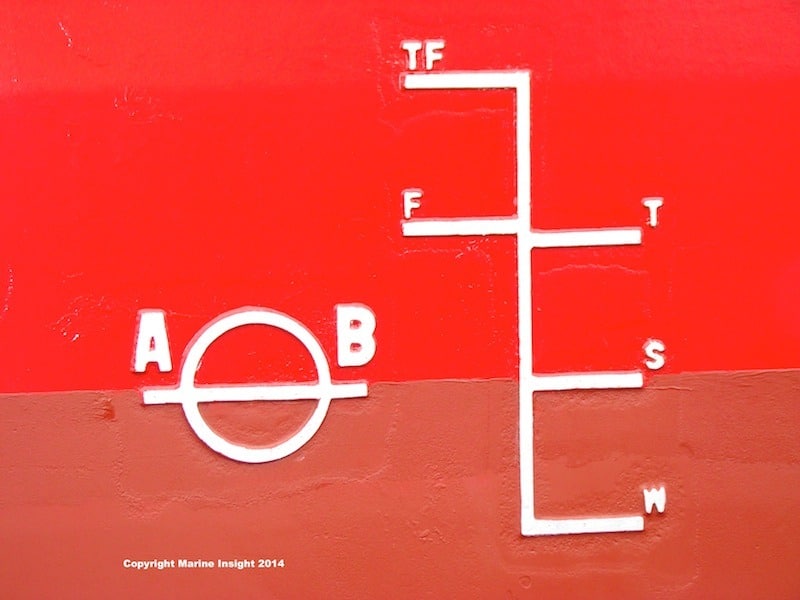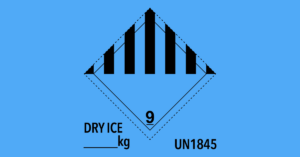What is Plimsoll Line on Ships?
What is Plimsoll Line?
Merchant ships have a marking on their hulls known as the Plimsoll line or the Plimsoll mark, which indicates the limit until which ships can be loaded with enough cargo.
Internationally, the Plimsoll line on a ship is officially referred to as the International load line. Every type of ship has a different level of floating and he Plimsoll line on a ship generally varies from one vessel to another.
Technically, no ship is able to absolutely float above, as it travels across the waters. A certain portion of the ship is always immersed in the seawater and the level of submerging is decided by the gross weight of the respective ship.
Even the type of water in which the ship is floating influences the application of the load line. Sometimes even the oceanic regions and changing seasons affect the Plimsoll mark, as well.
Researchers have found out that the temperature and salinity of the water also plays a key role in deciding the height until which the ship rests in the water.

Why should ships have a Plimsoll line?
The International load line is very essential to ensure safe and smooth sailing of cargo-loaded vessels in the sea. Seafarers should be wary of the fact that the water level should not rise above the line markers due to surcharging of cargo or any technological fault.
It might prove to be severely unsafe to the ship as tactless overloading of heavy shipment would sink the ship’s stability. Crossing the assigned limit of the Plimsoll mark or the waterline is considered a violation of an international shipping act and can even land the ship’s crew, including the Captain, in deep trouble.
How was the load line used in the past?
Earlier, the line markers used to be marked on the sides of the merchant ships using paint, and the sailors tried to follow the theory that the weight of the cargo should not cause the draught level of the water to rise above the waterline.
The primary symbol used to indicate the international load line is a circle with a horizontally marked line cutting through the centre of the respective circle.
How did the International load line become mandatory?
Samuel Plimsoll, a widely known personality and esteemed as the founder of the Plimsoll line, was a famous merchant and also a dedicated shipping reformer. He was an active member of the British Parliament and had influenced the Parliament to formulate
The Merchant Shipping Act in the year 1875. He was highly concerned with the safety of the people working in the maritime world. He disliked the organizers of the ships which drowned due to excessive goods that were dumped without any idea about the capacity.
He even took the time to conduct some serious research and was grieved to discover the sorry state of affairs. He once found out that nearly a thousand British sailors lose their lives due to the uninformed overloading.
Plimsoll was deeply affected by this and he was determined to bring about a change, to protect the sailors. He thus devised the Plimsoll line for types of merchant ships.
According to this reform, all cargo ships should have a load line marked on their hulls, to indicate the limit until which the ships can hold cargo. The line markers points at the maximum depth of safety till which the shipment can be loaded.
Thus, Samuel Plimsoll was the pioneer of the concept of the international load line and his contribution holds great significance in the maritime world.
The law found great coverage and it was practically applied to the outgoing foreign ships from the ports of Britain, and other countries observing strict nautical standards also started following the international load line rule.
The invention of the Plimsoll line proved to be a breakthrough for maintaining safety onboard ships, and after it was implemented in Britain, many countries followed the lead, immediately.
In the year of 1930, the International load line was enforced in around 54 countries. In 1968, a new discovery made its rounds in the nautical market. It was an improvisation of the former Plimsoll mark and involved the application of a smaller load-line for the new bulky ships.
The members of the Board of Trade passed an order that the load line was to be painted on all cargo ships. This occurred in the year of 1980.
The contribution of Samuel Plimsoll to the shipping industry is legendary and of great significance. It is due to his sincere efforts that the dangers of ship capsizing were reduced and several lives have been saved at the sea.
The Plimsoll line is now deemed mandatory. This symbol is now accepted all over the world and the waterline still carries the name of its pioneer, Samuel Plimsoll, as a tribute to the great Member of Parliament.
Disclaimer :
The information contained in this website is for general information purposes only. While we endeavour to keep the information up to date and correct, we make no representations or warranties of any kind, express or implied, about the completeness, accuracy, reliability, suitability or availability with respect to the website or the information, products, services, or related graphics contained on the website for any purpose. Any reliance you place on such information is therefore strictly at your own risk.
In no event will we be liable for any loss or damage including without limitation, indirect or consequential loss or damage, or any loss or damage whatsoever arising from loss of data or profits arising out of, or in connection with, the use of this website.
Do you have info to share with us ? Suggest a correction
Disclaimer :
The information contained in this website is for general information purposes only. While we endeavour to keep the information up to date and correct, we make no representations or warranties of any kind, express or implied, about the completeness, accuracy, reliability, suitability or availability with respect to the website or the information, products, services, or related graphics contained on the website for any purpose. Any reliance you place on such information is therefore strictly at your own risk.
In no event will we be liable for any loss or damage including without limitation, indirect or consequential loss or damage, or any loss or damage whatsoever arising from loss of data or profits arising out of, or in connection with, the use of this website.
Latest Maritime law Articles You Would Like:
Latest News
- Why Dry Ice Is Used For Packaging
- What is the Purpose of DG Shipping?
- What are Logistics Risks?
- How Port and Terminal Operators Can Control Emissions?
- Minimum Quantity Commitment (MQC) and Liquidated Damages in Container Shipping: Concept and Relevance
- MARPOL (The International Convention for Prevention of Marine Pollution For Ships): The Ultimate Guide
Daily Maritime News, Straight To Your Inbox
Sign Up To Get Daily Newsletters
Join over 60k+ people who read our daily newsletters
By subscribing, you agree to our Privacy Policy and may receive occasional deal communications; you can unsubscribe anytime.














I will like to know the meaning of the following; IMO,? , how to calculate the right positioning of the load line?
How can I find a list of the two-letter codes (such a L R [Lloyds Register] and A S[American Bureau of Ships]) which appear on the flat line through the circle of the famous Plimsoll Line? Is there a free PDF of these two-letter codes? I know what the water markings are, I just want to be able to spot and read the Registry Authority as well.
@ Rommel:
This wikipedia link is a good source: https://en.wikipedia.org/wiki/International_Association_of_Classification_Societies
Sir,what is the use of dead man’s handle in life boat. how it works?
how to lift/hoist the life boat upward, without help if motor fails?
without liftting dead man’s handle can we lift the life boat? how?
as we lift the dead man’s handle ,boat will go down, so how we can lift it with hand cranking?